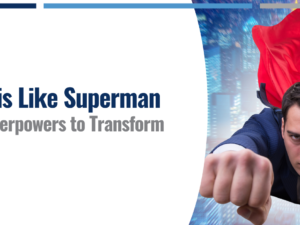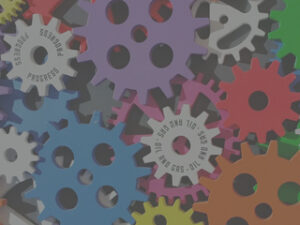
The Continuous Close
As Alec Baldwin once famously said, “Coffee is for closers”. You’re probably familiar with the phrase even if you’ve never seen the classic early 90’s film Glengarry Glen Ross.
While the “closer” referenced in the movie is a salesperson, the phrase may be much more appropriate for accountants, especially when the closing involves your books.
If you’re a finance professional, the thought of month-end may send chills down your spine.
You may have experienced the nightmare that it can bring:
From the long hours that sometimes include working nights and weekends, to the stress coupled with lack of sleep – from scrutinizing invoices and crunching numbers at the last minute, to never having enough coffee – these days or even weeks can be overwhelming.
What if there was a better way?
Well there just might be, and it’s called the Continuous Close.
What is the “Continuous Close”?
According to the Corporate Finance Institute, the Continuous Close is defined as a “different approach to managing a company’s accounting periods and cycles that embraces advancements in information technology and redefines the operations and role of finances in the corporate structure.”
The traditional approach to accounting typically involves most of the work being performed at the end of the accounting period.
The “Continuous Close” approach seeks to optimize your company’s accounting operations and procedures. Accounting errors are reduced. The accuracy of your reporting increases due to next-level data integrity. It also provides your finance professionals with an opportunity to focus on more important tasks, empowering them to be more proactive, and in many cases improving their levels of job satisfaction.
For a deep dive on this topic, I strongly recommend checking out an article from Strategic Finance Magazine’s website titled, “The Blueprint for Continuous Accounting“, as well as an amazing blog from NetSuite that cover the continuous close process in greater detail.
Also known as Continuous Accounting, many first adopters see the continuous close as a fantastic alternative to the traditional accounting approach. The continuous close results in a faster, better way to close the books. It gives companies much more accurate financial visibility. This provides business leaders the data they need to make more informed decisions and in a timelier manner.
As Strategic Finance states,
“A new approach called Continuous Accounting can be thought of as real-time R2R (Record-to-Report), a blueprint for a more modern accounting organization, and a call to evolve beyond batch processing. It embeds automation, control, and period-end tasks within day-to-day activities, allowing the rigid accounting calendar to mirror the broader business more closely. And it transforms the way business processes work by emphasizing real-time processing by highly skilled employees, coupled with deep analysis. The result is a more efficient close, more accurate financials, and a more effective organization.”
Where Do I Start?
You can’t just flip a switch and begin continuously closing tomorrow.
The continuous accounting method requires making more frequent financial updates than you might regularly.
By consistently performing these tasks in smaller chunks, the workload is more evenly distributed during the accounting period. This gives your team a chance to evaluate the integrity of information at any time. Because of the improved data integrity, there are fewer errors, as well as a reduction in fraud and inefficiencies.
The typical close out that occurs at the end of every period still takes place, but it’s no longer a monumental undertaking and becomes more of a routine task. The process is much more manageable since your team is reconciling a few journal entries or inter-company eliminations etc. every day instead of waiting for a huge batch at month-end.
If you’re familiar with inventory management, think of continuous accounting as taking your financial inventory perpetually instead of periodically.
So why aren’t more companies already continuously closing?
Prerequisites
According to Accounting Today, one major requirement may be holding organizations back – they lack modern technology that’s capable of allowing this paradigm shift.
If your company lacks the ability to automate the processes of procure-to-pay, order-to-cash, and particularly record-to-report, you may need to consider upgrading to an ERP platform like NetSuite to enable the continuous close approach.
But modern technology isn’t the only thing restricting some folks from getting started.
As companies contemplate making the leap to continuous accounting, a reform in time-management becomes a necessity, but it also constitutes a fundamental change in philosophy: Leaders of the organization must be willing to re-imagine some of their legacy processes, trust and empower their best employees, and embrace a culture of continuous improvement.
Without a doubt, the hardest part will likely be putting your new approach in place. For several reasons, businesses are reluctant, hesitant, and even fearful to transform their financial operations. However, it is achievable, and not just by large corporations with seemingly unlimited resources. Continuous accounting requires an ongoing, step-by-step journey paved with realistic, attainable milestones. To learn more about the Maturity Model shown below that can get you there, check out the article from Strategic Finance Magazine.
 (Source: Strategic Finance Magazine)
(Source: Strategic Finance Magazine)
Careful planning, thoughtful timing, proper design – and perhaps most importantly – unlocking the power of your phenomenal finance professionals, are the components that collectively make up the blueprint for continuous accounting.
Record-to-Report
Maybe the biggest hurdle that today’s accounting and finance professionals face is they use an outdated method. Many of the processes involved in the traditional financial close were created long ago, have not really evolved, and are not necessarily suitable for the modern business economy of the 21st century.
The rise of the Internet has given way to an incredible and rapid evolution in technology. We now operate in a global economy where expectations do not always intersect with reality. While some may not see it yet, there is a golden opportunity here for accounting and finance departments to capitalize on the benefits of technological innovation.
The standard operating procedures in accounting departments have almost always involved manual tasks and data entry. These tasks are not only tedious, time-consuming, and labor-intensive, but also lead to errors, especially at the close of the accounting period.
None of us want to scramble and sift through paperwork or spreadsheets at the last minute to find an exception that requires further investigation.
As Strategic Finance states,
“The conventional record-to-report (R2R) model condenses a huge amount of work into a short time span and delays data processing and reporting to the end of the period. This is a reactive and expensive approach. Moreover, it leaves no time for analysis, and the increased risk of error can damage the quality, accuracy, and timeliness of results.”
Cramming all that work into just a week is not only taxing but has become counter-intuitive. Would anyone be surprised to learn that stressed-out, exhausted employees are going to be more error-prone? Not only that, but the process leaves very little or no time at all for leaders reviewing the results to analyze it and make informed decisions.
I am not suggesting that continuous accounting is right, and the traditional process is wrong. The truth is that the traditional accounting method has not yet caught up to where we are today.
 (Source: Strategic Finance Magazine)
(Source: Strategic Finance Magazine)
Principles of Continuous Accounting
According to the Corporate Finance Institute, the concept of continuous accounting is based on the following fundamental principles:
1. Technology
Automating some of your repetitive and mechanical accounting tasks will require modern technology. You can’t automate everything, only what makes sense for your business and department. The goal of automation is to free up your outstanding team to do more valuable things with their time.
2. Workload Distribution
You will need to address reconciliations and allocations more frequently instead of waiting until the end of the month. A more evenly distributed workload decreases the stress on employees and reduces errors. In addition, the more frequent reporting provides more accurate and even real-time financial information to the business leaders.
3. Culture Shift
This is obviously a major change that can be scary to some. Without buy-in from everyone involved, continuous close cannot succeed. A culture must be germinated and nurtured to the point where all involved are on-board. In time, your team will realize this new process allows the company to thrive and achieve a competitive advantage.
Benefits
Most of the benefits to this new approach have already been mentioned, but they are many, and they are substantial. The most obvious benefit is the real-time, on-demand visibility into key financial data.
Some of the ancillary benefits include:
- Improved data integrity (impacting internal & external stakeholders)
- More informed decision-making capabilities
- Better financial visibility and control
- Faster, more efficient accounting period close
- Continuous improvement in various business processes
- Empowering your financial professionals
- Increase in job satisfaction for your accountants
- Reduction in stress, burnout, and turnover of valuable employees
Learn More
When it comes to continuous accounting, keep in mind that the journey is just as important as the destination. With the right people in place, modern technology at your fingertips, and sound processes, you can and will succeed. There may be a speed bumps along the way, but with the right mindset, you can adapt to and overcome any of challenges the new process brings.
Want to learn more? Let’s grab a cup of coffee now that you’re a continuous closer!
For information on Continuous Accounting, contact Keystone today!
![]()
Keystone. Your NetSuite solution provider and integration partner.
Call – 866-546-7227 | Email – info@kbscloud.net





